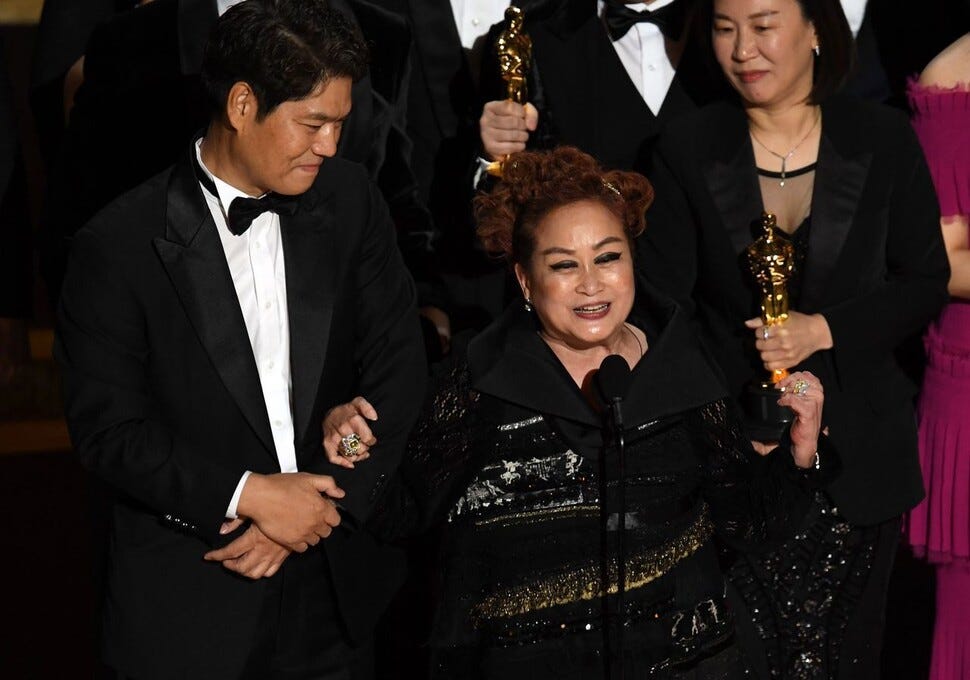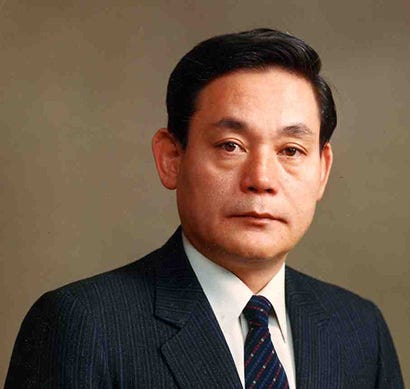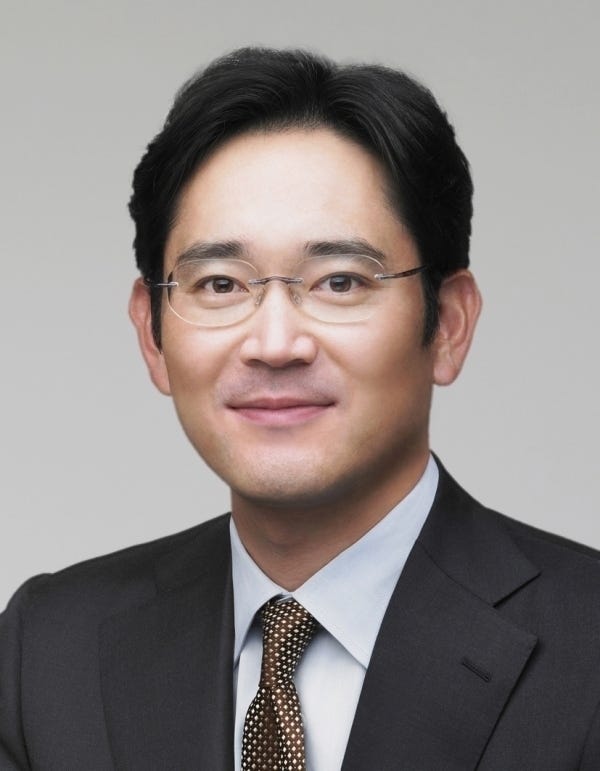I’m sure you know this company. It makes phones, TVs, refrigerators… But do you know which division of Samsung Electronics makes the most amount of money? It’s a division they call DS, or Device Solutions, that designs and produces semiconductors. You don’t hear about it because it’s a 100% business to business operation, and their biggest customer? You’ll never guess it. It’s Apple.
Without a doubt, this is the biggest and the most recognizable Korean company. And, no, it’s not the last name of the founder—Korean companies don’t do that. It’s thought to be conceited, self-aggrandizing, self-indulgent… So, none of the 50 largest companies that I’ve listed in the previous posting is the last name of is the founder.
Samsung (삼성, 三星) literally means, “Three Stars” or “Tri-Star” and it was founded by a man named Lee Byung-chul (이병철) in 1938 in the city of Daegu.
At the time, it began as a small import/export outfit mostly selling apples and dried fish products to Manchuria in China. Soon after, the store brought in a flourmill equipment and started mass production of noodles, a far cry from what they do now. The logo for those noodles?
The product became hugely popular with consumers, and Lee re-invested the money to found Cheil Jedang (or, Jeil Jedang, 제일제당, “Jeil or Cheil” means “First” or “Premier”) that produced sugar, flour, cooking oil, and other consumer food products.
A Side Note: the acronym for Cheil Jedang is obviously CJ. Maybe you’ve come across that particular acronym when watching Korean movies, as CJ ENM (CJ Entertainment & Media). This CJ, spun off from Lee’s Samsung Group in 1993, reinvented itself as a leading entertainment business company. When the movie Parasite won the Oscars for the Best Movie of the Year in 2020, there was a small lady at the end of the televised show that spoke. Remember her? That’s Lee Mi-kyung, the Samsung founder Lee Byung-chul’s granddaughter, and vice chairman of the CJ Group, and the biggest supporter of the director Bong Jun-ho.
Getting back to Samsung, the founder Lee kept reinvesting into different businesses, other than the import/export and manufacturing food products. In 1969, at the behest of the South Korean government, Lee ventured into the electronics business to manufacture TVs and very rudimentary semiconductors. And the rest, as they say, is history.
Lee Byung-chul had 2 daughters and 4 sons. And keeping with the tradition, the founder Lee picked his oldest son Maeng-hee (이맹희) to be his successor, but was soon kicked out of the position because of unclarified reasons.
The speculation is that Maeng-hee was the one who masterminded the scheme illegally importing saccharine from Japan which got Samsung into trouble with the government and put the entire company in jeopardy. This point has been bitterly contested in later years during Maeng-hee’s legal fight against his brother but failed to win.
Anyhow, the baton was passed on to the third son, Gun-hee (이건희).
By this time, Samsung Electronics was fast becoming the centerpiece of the entire Samsung Group and was considered its jewel. But when Gun-hee took over the reins in 1987, one month after his dad passed away, Samsung was still largely a Korean domestic company, not the international behemoth that it is today.
On a personal note, I remember in the late 80s and early 90s the local LA electronics shops such as Best Buy and Circuit City selling Samsung TVs but they were mostly the cheap kinds—the ones that competed on prices, not on quality.
Then came 1993, the year which all students of Samsung history agree that transformed the company. Chairman Lee Gun-hee after a whirlwind tour of how his company was doing in foreign lands, called for a meeting of all of his top lieutenants (about 200 of them) in Frankfurt, Germany. Completely dissatisfied with how things were going, he ordered all of his people to “change everything except your wife and children.” And the legendary burning of 150,000 sets of Anycall mobile phones (before Galaxy models) followed. Yes, he actually had that many phones in inventory set on fire because he wasn’t happy with the design and the quality of the phones.
The speech that Lee made in Frankfurt to his lieutenants is so legendary that it eventually came to be known as the “Frankfurt Declaration of 1993.” And change Samsung did. It went from an inexpensive TV and low-end semiconductor manufacturer to the biggest comprehensive electronics/semiconductor company in the world in about 2 decades. Where his father laid the groundworks, Gun-hee is largely credited with growing Samsung to what it is today.
He passed away at the age of 78 (his dad Byung-chul passed at 77) in 2020, and now his son Jae-yong (이재용) is the 3rd generation Samsung CEO and Chairman.
On another personal note, I saw Lee Jae-yong driving down Wilshire Blvd near Beverly Hills about 10 years ago. He was driving a convertible Porsche with the top down—and I’ll never forget it—he had this look of such liberation. Can you imagine what kind of pressure that he’s had to endure his entire life?
Anyway, his younger sister Bu-jin is the CEO of the Shilla Hotel (the most expensive in Korea—at one of its lounges, mango shaved ice dessert sells for $70), and another younger sister Seo-hyun is the Vice President of Cheil Worldwide (ad agency). But there was a family tragedy as well. Jae-yong’s youngest sister, and therefore Gun-hee’s youngest daughter, committed suicide in New York in 2005 while a student at NYU. It is next to impossible tracking down what had actually happened to her, and nor is that anyone’s business, really…
Samsung Group as a whole went through a few earth-moving changes over the years. It divested and sold off many of its affiliated companies and only kept their “core” businesses. The biggest divestitures were CJ Group, Hansol Group, and Shinsegye Group, all of which were given to the founder’s children. Even after that, Samsung Group has close to 70 directly owned public and closely held companies—anywhere from biotech to financing to insurance to theme parks (Everland).
Many believe that Samsung’s private intelligence team is more powerful and better connected that the Korean CIA itself.
There is something called Ho-am Awards (akin to the Nobel Prize) that recognizes scientists and engineers of Korean descent that is very highly regarded. The award is named after the founder Lee Byung-chul’s nickname, Ho-am.
Lee Gun-hee was an avid art collector. He, upon death, donated most of the artworks he owned to the government, which is now on display at the National Museum of Modern and Contemporary Art (MMCA). It includes Gauguin, Monet, Picasso, Dali, Renoir, Miro, Chagall, among others.
There’s a method to where Samsung decides to build its factories and regional headquarter buildings. It’s based on strict feng-shui principles, and there are real estate investors who preach “Buy near where Samsung builds and you’ll never fail.”
Samsung owns the Sungkyunkwan University, which is a top 5 university in Korea.
Samsung also owns the biggest number of patents relating to graphene, the material of the future. Do you know who’s number 2 on that list? Sungkyunkwan University. Notoriously hard to commercialize, but we’ll see where this goes. From what I know, if they figure out how to mass produce it with reasonable cost, this material WILL change the world.










